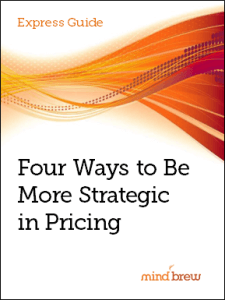If you book a flight on a commercial airline today, you have hundreds of different options that could result in a myriad of different fares.
Of course, it hasn’t always been this way. In the early decades of passenger service starting in the 1920s, only the rich could afford to fly, and they expected their ticket to include fine meals, dining, and staff to cater to their needs. In the 1950s and 60s, some flights even had on-board chefs, with the price of the meal included in the ticket.
It wasn’t until the 1970s that airlines started experimenting with “no-frills” options for travelers on a budget. Passengers soon got the option of booking a first-class or economy ticket, with airlines adding business class later on.
Pricing structures continued to get more and more elaborate over the years, with the actual fare more closely tied to the services that passengers consume. Love it or hate it, today you have the option to pay extra to check a bag. To order a drink or a meal. To use the in-flight Wi-Fi. To watch a movie. To use the special lounge in the airport. To have more legroom. To sit in a particular seat. The list goes on and on.
But there’s one pricing tactic airlines have been using for many decades that you might never have noticed:
They sell the same space twice.
No, we’re not talking about the common practice of overbooking flights. We’re talking about the sliver of space between your seat and the seat in front of you. You might assume that the space in front of you is yours. After all, the manufacturer conveniently put a tray table and probably an in-flight entertainment system there for your use.
But what about when the person in front of you reclines their seat. They assume that this sliver of space is theirs to use. After all, the seat has a recline button.
Maybe we shouldn’t give them any ideas, but it’s certainly possible that the airlines could make more money by leveraging this gray area around the idea of space ownership. Would you pay extra to be able to lean your seat back without feeling guilty about it? Would you pay extra to prevent the person in front of you from reclining?
This isn’t just a rhetorical question. It’s actually a helpful exercise that starts you down the path of thinking more clearly about segmentation, value-based pricing, and pricing structure. No matter what business you are in, you should be asking yourself these three questions:
- Are there certain customers that perceive your products or services to have a higher value to them?
- Are there certain elements of your products or services that customers would be willing to pay more for?
- Are there ways you can structure your offerings to better align to customers’ needs and value?
Don’t get us wrong — we certainly don’t condone selling the same thing to multiple customers. But we definitely condone — and in fact, highly encourage — getting your segmentation, value-based pricing, and price structures dialed in. These powerful tools can boost margins and may even make customers a bit more satisfied that they’re getting what they paid for.
If you’re interested in learning more, check out these resources:
- The Fundamentals of Price Segmentation
- The Fundamentals of Value-Based Pricing
- The Fundamentals of Price Structure
And if you really, really want to make sure the person in the airplane seat in front of you doesn’t recline, social scientists say that the technique most likely to have good results (without a confrontation) is to offer to buy that person a drink or a snack in exchange for not reclining.
















